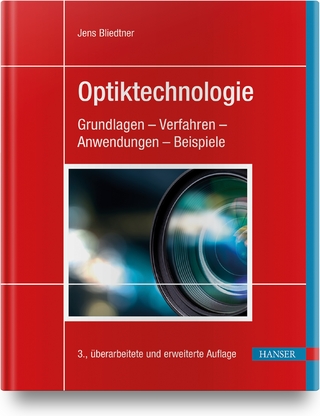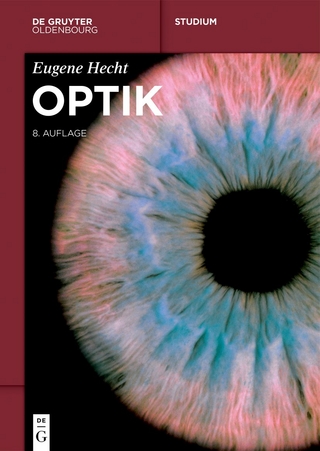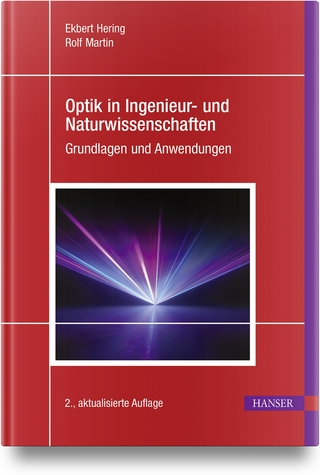
Fibre Optic Communication Devices
Springer Berlin (Verlag)
978-3-540-66977-7 (ISBN)
Modern communication technologies have revolutionized society and econ omy on a global scale, and progress in this field is still breathtaking. Among the crucial features of these developments is the possibility to transmit/receive ever-increasing bit rates at lower and lower cost. This is due to some ex tent to improved electronics, but it is much more due to the capabilities of opticaL fibre-based communication systems. Optical communication tech nologies were initially introduced in order to improve traditional information exchange, but they have recently become a key prerequisite for the tremen dous growth in internet traffic, and optical technologies will be even more important in enabling and supporting the future expansion of internet traffic with annual growth rates forecast at 100%-200%. It is the purpose of the present book to describe the enabling components of optical communication systems, in particular their fundamentals, principles and current status, as well as the potential for future developments. Following such a scheme, it is the editors' hope that this book will not only attract the attention of experts already working in the field, but be, at least, likewise directed to interested newcomers. The book is organized into eleven chapters addressing the essential optical and optoelectronic components which form the hardware basis of today's, and most likely of future, optical networks.
1 Characteristics of Optical Communication Networks.- 1.1 Optical Network Issues.- 1.2 Long-Haul Networks.- 1.3 WDM Networking.- 1.4 Connection Patterns.- 1.5 Optical Network Protection.- 1.6 Optical Network Elements.- References.- 2 The Optical Fibre.- 2.1 Introduction.- 2.2 Waveguiding Properties.- 2.3 Fibre Materials.- 2.4 Basic Optical Properties.- 2.5 Nonlinear Optical Properties.- 2.6 Pulse Propagation in Optical Fibres.- References.- 3 Transmitters.- 3.1 Introduction.- 3.2 Theory.- 3.3 Basic Design of Semiconductor Laser Structures.- 3.4 Single-Mode Laser Structures.- 3.5 Tunable Lasers.- References.- 4 Optical Photodetectors.- 4.1 Introduction.- 4.2 The PIN Photodiode.- 4.3 The Avalanche Photodiode (APD).- 4.4 Photodiodes.- 4.5 Photoreceivers.- 4.6 Conclusion.- References.- 5 Optical Amplifiers.- 5.1 Optical Fibre Amplifiers.- 5.2 Semiconductor Optical Amplifiers.- References.- 6 Passive and Active Glass Integrated Optics Devices.- 6.1 General Introduction.- 6.2 Passive Power Splitters.- 6.3 Integrated Optic Yb/Er Glass Amplifiers.- 6.4 Integrated Optic Er/Yb Laser Oscillators.- References.- 7 Wavelength-Selective Devices.- 7.1 Introduction.- 7.2 Device Specifications.- 7.3 Fabry-Perot Interferometer Filters.- 7.4 Dielectric Interference Filters.- 7.5 Fibre Gratings.- 7.6 Grating-based Demultiplexers.- 7.7 PHASAR-based Devices.- 7.8 Integrated Acousto-Optical Devices in LiNbO3.- References.- 8 Optical Switching.- 8.1 Introduction.- 8.2 Applications.- 8.3 Technologies.- 8.4 Summary.- References.- 9 All-Optical Time-Division Multiplexing Technology.- 9.1 Role of All-Optical TDM Technology.- 9.2 Key Technologies for All-Optical TDM Systems.- 9.3 Demonstration of OTDM and OTDM/WDM Transmission.- References.- 10 Optical Hybrid Integrated Circuits.- 10.1 Introduction.- 10.2 Key Technologies for Hybrid Integration.- 10.3 Contributions of Hybrid Integration to Optical Communication Technology.- 10.4 Future Prospects.- 10.5 Summary.- References.- 11 Monolithic Integration.- 11.1 Introductory Remarks.- 11.2 Waveguides.- 11.3 Integrated Spot-Size Converters.- 11.4 Monolithic Laser Integration.- 11.5 Integrated Receiver.- 11.6 Crosstalk.- 11.7 Current Status of Optoelectronic Integration.- 11.8 Outlook.- References.- Biographical Notes.
From the reviews of the first edition:
"Devices for use in optical communication systems have experienced a massive increase in attention over the past few years. ... The book is well presented, readable and adequately up-to-date, with the most recent references in the late 1990s, and at least mentions of most of the 'hot' topics that are currently exciting us. ... The very extensive list of references enhances the value of the book in that role, and for this reason alone it should find a place on many bookshelves." (Peter R. Selway, Measurement Science and Technology, Vol. 12 (9), 2002)
| Erscheint lt. Verlag | 26.1.2001 |
|---|---|
| Reihe/Serie | Springer Series in Photonics |
| Zusatzinfo | XXI, 465 p. |
| Verlagsort | Berlin |
| Sprache | englisch |
| Maße | 155 x 235 mm |
| Gewicht | 810 g |
| Themenwelt | Naturwissenschaften ► Physik / Astronomie ► Optik |
| Technik ► Elektrotechnik / Energietechnik | |
| Schlagworte | Communication • Demultiplexer • fiber optics • fibre optical communication systems • Filter • Glasfaser • Integrated circuit • Interferometer • intergration • Laser • Modulation • Modulator • Multiplexer • optical filters • optical switching • optoelectronic devices • optoelectronic systems • photodiode • Switch • Transmission |
| ISBN-10 | 3-540-66977-9 / 3540669779 |
| ISBN-13 | 978-3-540-66977-7 / 9783540669777 |
| Zustand | Neuware |
| Haben Sie eine Frage zum Produkt? |
aus dem Bereich


